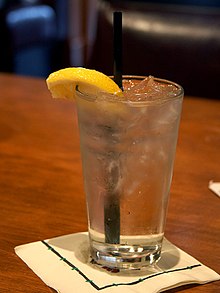Structural Biochemistry/Third law
Introduction
[edit | edit source]The Third Law of Thermodynamics is a physical law regarding the role of entropy in nature. This law, along with the first two Laws of Thermodynamics are absolute, in that everything in the observable universe obeys these laws and, like time and gravity, nothing is exempt from them. The Third Law of Thermodynamics states that:
- "As a system approaches absolute zero, all processes cease and the entropy of the system approaches a minimum value."
This minimum value, however, is not necessarily zero, although it is almost always zero in a perfect, pure crystalline substance. A perfect, pure crystal is one where the atomic and molecular arrangement is perfectly symmetrical and evenly distributed throughout the substance, and where each molecule is identical to one another. On the Kelvin scale, zero degrees Kelvin is the lowest mathematically possible temperature in the universe, corresponding to about -273.15° Celsius or -459.7 Fahrenheit.
In actuality, it is impossible for any real system to reach absolute zero, in part due to the Second Law of Thermodynamics, which says that heat transfer cannot occur spontaneously from a colder body to a hotter body. Thus, any system must draw energy from nearby systems as the system approaches absolute zero. Because it must draw energy, obtaining absolute zero is physically impossible and is a mathematical limit of the universe.
Entropy
[edit | edit source]
As a result of the Third Law of Thermodynamics, the concept that the entropy of a system, ΔS, reaches a constant (or 0 Kelvin for a perfect crystal) at a temperature of absolute zero is introduced. This is important because it provides a bottom foundation from which entropy can be measured. For any isothermal process that involves only substances in internal equilibrium, the entropy change goes to zero as the temperature approaches zero. Entropy quantifies the disorder of a system and is used to predict how a system will spontaneously change. Since entropy is proportional to the temperature of a system, once the temperature reaches its lowest point (absolute zero), the entropy, too, approaches zero. This idea can be visualized by drawing an example from water. Water at its most physically free state, water vapor, is fairly unaffected by intermolecular forces, and thus the molecules move and disperse freely and randomly throughout the atmosphere. Water in this form has very high entropy (randomness). As the temperature drops below 100° C and the gas condenses into liquid, the intermolecular forces come into play to a larger degree and thus the molecules move less freely. Water in this form has lost some entropy. As the liquid water approaches 0° C and freezes into solid ice, the intermolecular forces become extremely strong and the molecules can no longer move freely, but can only vibrate within the ice crystals. The entropy in this form is extremely low. As the water is cooled more and the temperature becomes closer and closer to absolute zero, the molecules would completely cease motion and the entropy at this state would have zero entropy.